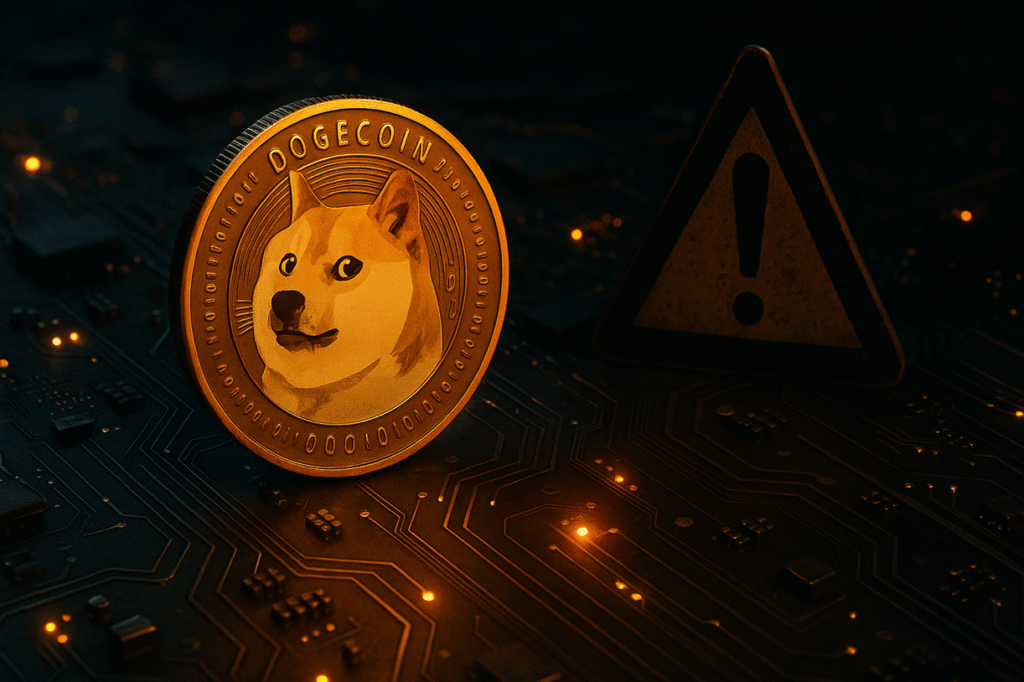In the fast-evolving world of cryptocurrencies, adapting to new challenges and potential threats is crucial for maintaining network stability and security. Amidst rising concerns about coordinated attacks from AI-driven collectives like Qubic, the Dogecoin community is taking proactive measures to safeguard its network. With recent developments highlighting a significant surge in hash power, Dogecoin seems to be fortifying its defenses. This engaging overview delves into these dynamics, offering insights into Dogecoin’s response to potential disruptions and its evolving technical landscape.
Understanding Dogecoin’s Resilience Against Potential Threats
As discussions of Qubic potentially targeting Dogecoin gain traction, the broader Dogecoin community, including its core developers, is bracing for any eventualities. This preparation comes in the wake of Qubic’s previous engagement with Monero, which led to noticeable disruptions. Dogecoin’s response appears to be a rallying cry, urging its miners to bolster defenses and ensuring the network’s integrity remains uncompromised.
The State of Dogecoin’s Network Security
The growing concern stems from a community poll conducted by Qubic, which hinted at focusing its computational resources on Dogecoin. While Qubic’s intentions oscillate between mining for profit and purported attacks, the implications of such moves cannot be understated. Sergey Ivancheglo, a prominent figure in Qubic, clarified that their primary aim is to mine, not attack Dogecoin, although preparations are necessary to facilitate this transition.
Despite Qubic’s assurances, their coordinated actions on Monero had considerable impacts, raising alarms within other cryptocurrency communities. During Qubic’s focus on Monero, there was a contentious chain reorganization that disrupted regular operations. These events underline the importance of understanding the potential implications for Dogecoin and its community.
Dogecoin’s Hashrate Dynamics
In response to these perceived threats, Dogecoin’s hashrate has reached unprecedented levels, signifying a concerted effort to shield the network. Data from BitInfoCharts confirms an all-time high Scrypt hashrate of 2.948 PH/s, showcasing the increased dedication of miners to support Dogecoin. This heightened activity reflects not only community vigilance but also the robust nature of Dogecoin’s security infrastructure.
One key factor that distinguishes Dogecoin from Monero is its auxiliary proof-of-work mechanism, shared with Litecoin. This strategy allows the same Scrypt ASIC miners validating Litecoin to simultaneously secure Dogecoin, effectively broadening its support base. The industrial scale of Scrypt ASICs presents an additional hurdle for potential attackers, making a direct 51% attack on Dogecoin considerably more challenging compared to Monero’s primarily CPU-based network.
FAQs Related to Dogecoin’s Network and Security
How does Dogecoin’s auxiliary proof-of-work enhance its security?
Dogecoin utilizes auxiliary proof-of-work (PoW) with Litecoin, allowing Scrypt ASIC miners to validate transactions on both networks simultaneously. This shared security model expands Dogecoin’s miner base, making it more resilient to attacks compared to networks without such arrangements.
What impact did Qubic’s actions have on Monero, and what lessons does it offer for Dogecoin?
Qubic’s focus on Monero resulted in a temporary chain reorganization, highlighting vulnerabilities in networks with less dispersed mining power. For Dogecoin, the lesson is clear: strengthening network security through increased hashrate and community involvement can mitigate similar risks.
Is Dogecoin’s surge in hashrate sustainable long-term?
The increase in Dogecoin’s hashrate is largely driven by community efforts to counter perceived threats. While sustaining such levels requires ongoing miner support and favorable market conditions, the current infrastructure and community backing suggest an optimistic outlook.
Could Qubic’s interest in Dogecoin pose a significant threat?
While Qubic’s focus on Dogecoin raises concerns, the coordinated defensive measures and Dogecoin’s advanced security protocols make it well-prepared to handle potential challenges. Continuous monitoring and community readiness remain essential in navigating these threats.
By examining these developments, this guide provides a comprehensive understanding of Dogecoin’s proactive measures against potential disruptions. This in-depth analysis underscores the importance of community-driven security measures and strategic technological enhancements in ensuring the stability and resilience of cryptocurrency networks.

